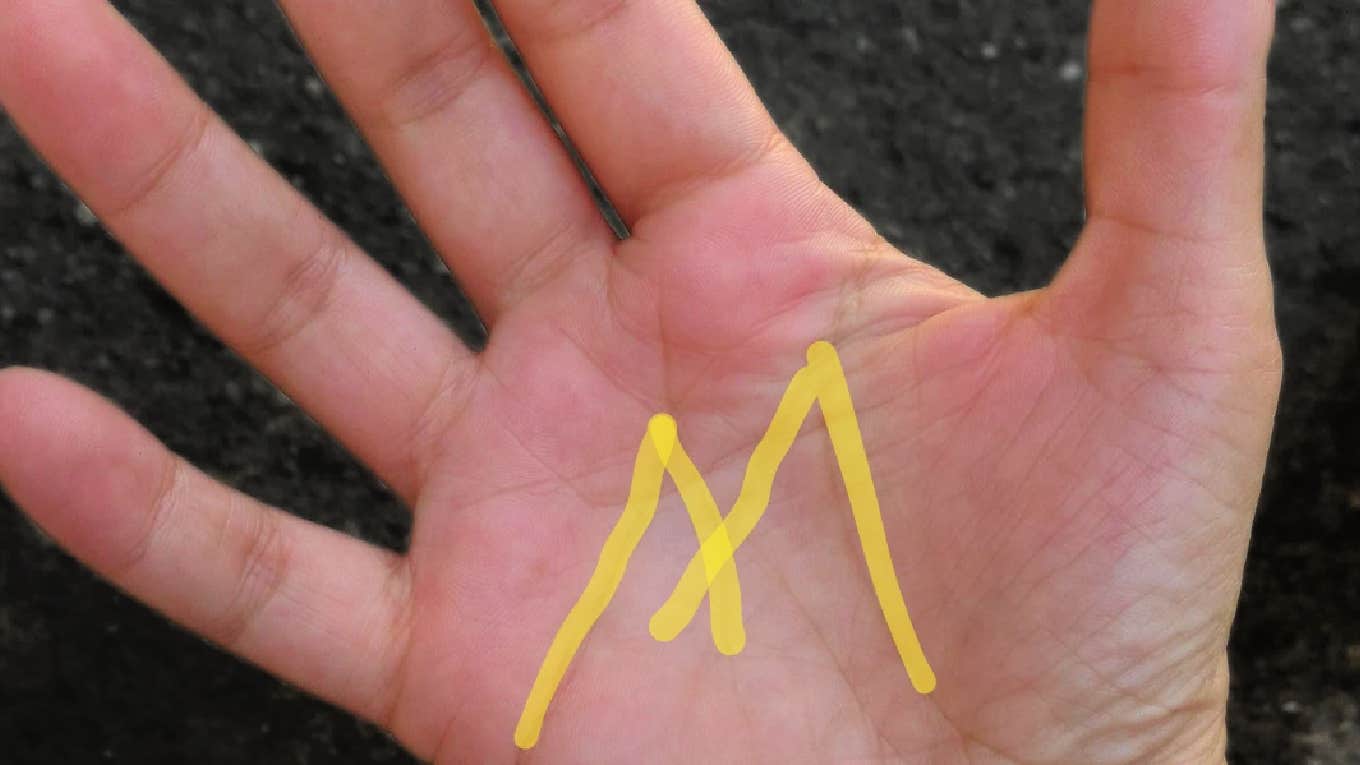Palm lines have fascinated people for thousands of years. If you’ve ever looked at your own hand and noticed that the major lines sometimes appear to form shapes—including the letter “M”—you’re not alone. Around the world, people have interpreted these lines in many ways, from cultural traditions to personal curiosity.
While there is no scientific evidence that palm lines predict personality or fate, their patterns are real anatomical features with interesting origins and cultural significance. This article explains what palm lines actually are, what they can tell us medically, and how traditions like palmistry have historically interpreted them.

The Anatomy of Palm Lines
What Are Palm Lines?
Palm lines, or palmar flexion creases, are folds and grooves in the skin of the hand. They develop before birth—usually by the 12th week of gestation—and remain largely stable throughout life.
These creases allow the skin to flex when the hand opens and closes, supporting grip and fine motor control. Most people have three major lines:
-
Heart Line: runs horizontally under the fingers
-
Head Line: runs across the center of the palm
-
Life Line: curves around the base of the thumb toward the wrist
Variations in the number and shape of these lines are normal and largely genetic.
Variations in Palm Lines
Some people have unique palm crease patterns, such as:
-
Single transverse palmar crease (formerly called a “simian crease”)
-
Extra minor lines
-
Intersections that can appear to form letters or shapes
A pattern resembling an “M” typically results from how the heart, head, and life lines intersect. Medically, this is a normal variation with no documented predictive or personality significance.
Cultural Interpretations of Palm Lines
Historical Background of Palmistry
Palmistry (or chiromancy) is the practice of interpreting hand lines to suggest personality traits or predict future events. It has ancient roots in India, China, Egypt, and Greece. Historical records show it was linked to Hindu astrology and spread along trade routes.
Today, palmistry is widely considered a form of entertainment or cultural tradition, not a science. There is no empirical evidence that palm lines can predict personality or destiny.
Why People See Shapes Like “M”
Humans have a natural tendency toward pareidolia—seeing patterns or familiar shapes where none exist, like animals in clouds or faces in everyday objects.
When the three major palm lines cross in certain ways, they can appear to form an “M.” This is a normal anatomical variation, not a sign of fortune or unique character traits.
Scientific View on Palm Reading Claims
No Predictive Power
Scientific research has found no reliable link between palm lines and personality, behavior, or life outcomes. Decades of psychological study have shown that while people often find meaning in symbols, there is no evidence these lines have predictive power.
Psychologists note that practices like palmistry may offer comfort, storytelling, or self-reflection, but they should not be confused with science.

Medical Relevance of Palm Lines
While palm lines don’t predict your future, they can occasionally have clinical significance:
-
A single transverse palmar crease is a normal variation but is more common in certain genetic conditions like Down syndrome.
-
Pediatricians sometimes note palm crease patterns as one of many diagnostic clues.
These uses are purely medical observations, not predictions of personality or fate.
Cultural Significance and Personal Meaning
Even without scientific backing, palm reading remains a cultural tradition in many parts of the world. For some, it is a form of storytelling or self-exploration, used in social or spiritual contexts.
As long as it’s understood as cultural or entertainment rather than fact, people may choose to enjoy it as part of their heritage or social life.

Conclusion
If you notice lines on your palm forming an “M” shape, it’s simply a natural variation in the way the skin folds. There is no evidence this marking predicts your personality or success. Instead, it reflects the fascinating complexity of how our hands develop before birth.
Palmistry is part of cultural history, offering insight into human storytelling and tradition. But scientifically, palm lines are anatomical features supporting the function and flexibility of the hand—no more, no less.
Sources
-
National Library of Medicine – Palmar Creases
-
NIH Genetics Home Reference
-
Cleveland Clinic – Single Transverse Palmar Crease
-
Encyclopaedia Britannica – Palmistry
-
The Skeptic’s Dictionary – Palmistry
-
Scientific American – Why Do We See Faces in Objects?
-
American Psychological Association – Why People Believe in Astrology
-
American Academy of Pediatrics – Clinical Genetic Testing in Children and Adolescents
-
UNESCO – Intangible Cultural Heritage


